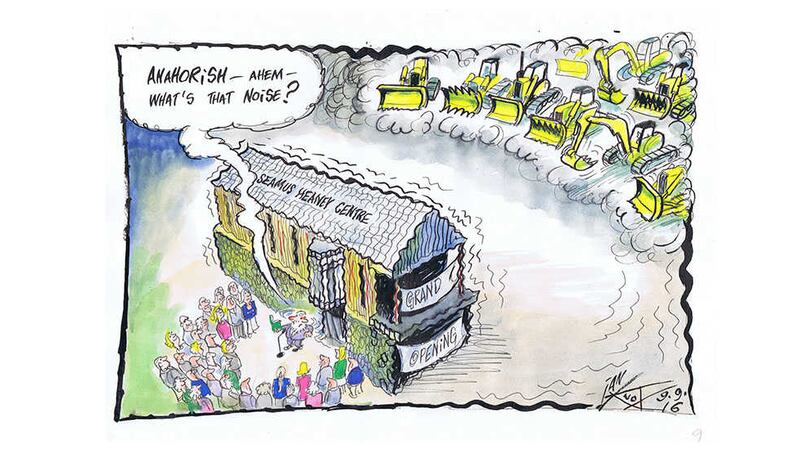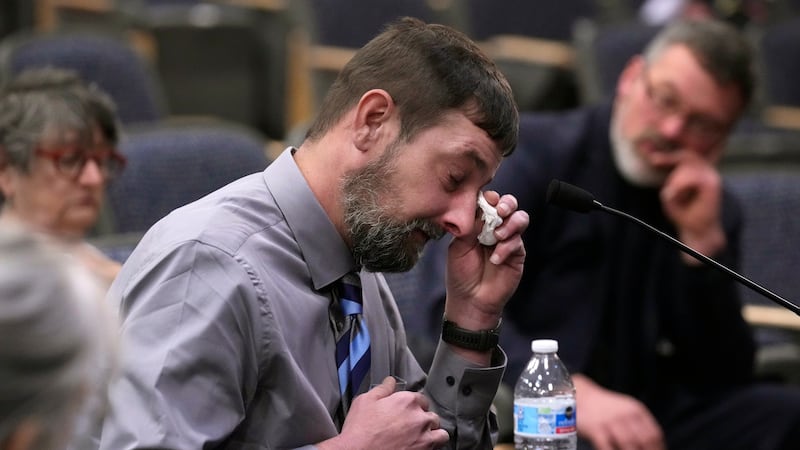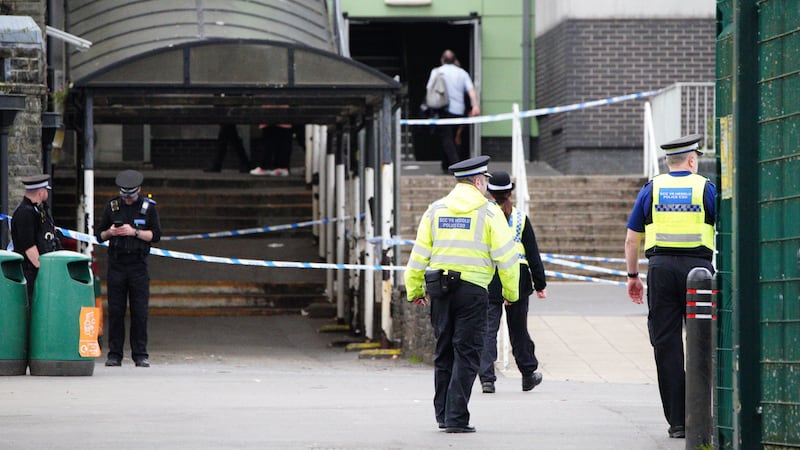Nobel Laureate Seamus Heaney urged authorities not to build a £160m new road through a “precious” area of countryside in his native Co Derry.
His heartfelt appeal was contained in a letter written to former Secretary of State Peter Hain in 2005.
The letter, seen by The Irish News, was sent after road chiefs outlined several potential routes for an upgraded section of the A6 through an area near Lough Beg.
Earlier this year Stormont roads minister Chris Hazzard announced plans to start work on the favoured option, although the plan is set to face a legal challenge.
The nine-mile dual carriageway will replace the existing road from Castledawson to the M22 motorway, including several bottlenecks which can cause lengthy tailbacks for motorists travelling between Belfast and Derry.
While the disputed route tracks north of the current road close to Lough Beg, an alternative proposal would have brought it to the south through an abandoned World War Two US airbase which Heaney calls the “old Creagh airfield”.
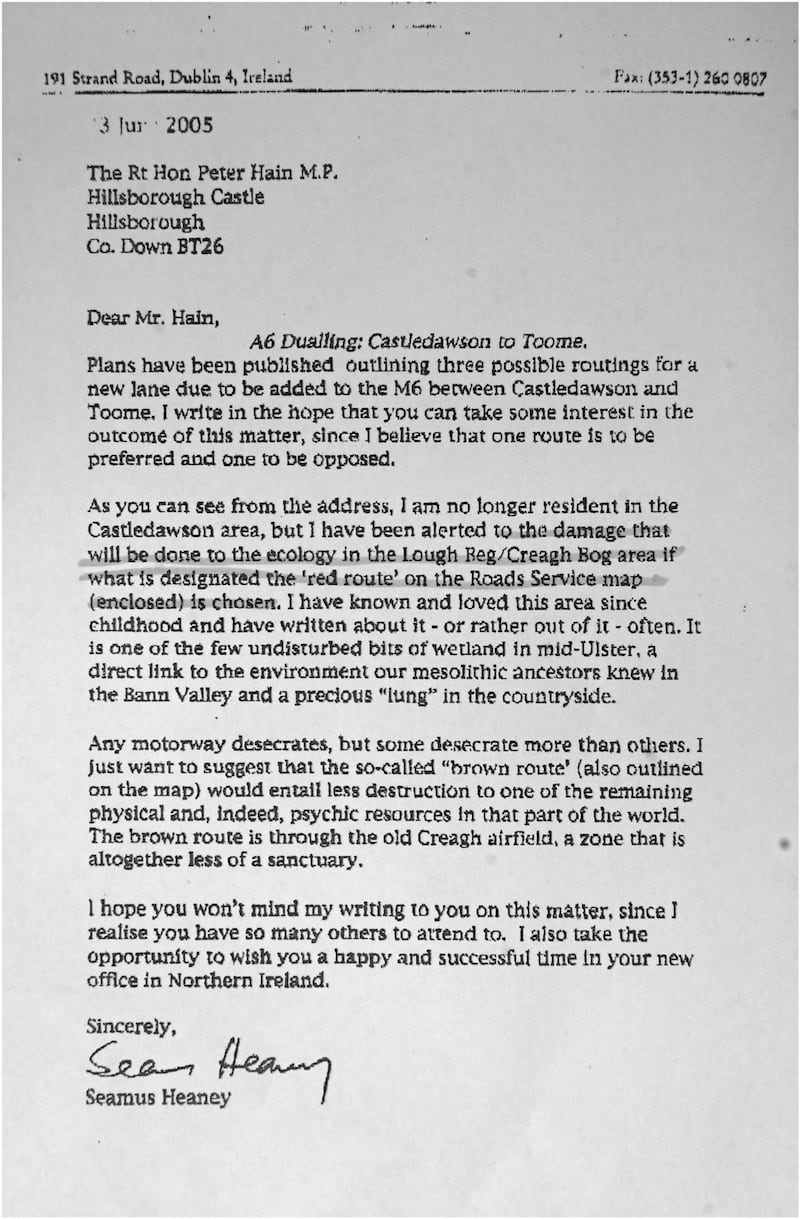
Both routes pass close to Anahorish, near Castledawson, made famous in Heaney's poetry.
The poet said that although he was no longer a resident of the area he had been “alerted to the damage that will be done to the ecology in the Lough Beg/Creagh Bog area” if the northern route was chosen.
“I have known and loved this area since childhood and have written about it – or rather out of it – often,” he wrote.
“It is one of the few undisturbed bits of wetland in mid-Ulster, a direct link to the environment our Mesolithic ancestors knew in the Bann Valley and a precious ‘lung’ in the countryside.”
The poet said he would favour the alternative route through the disused airfield.
“Any motorway desecrates, but some desecrate more than others,” he said.
“I just want to suggest that the so-called ‘brown route’ would entail less destruction to one of the remaining physical and, indeed, psychic resources in that part of the world.
“The brown route is through the old Creagh airfield, a zone that is altogether less of a sanctuary.”
Local resident and campaigner Gerry Donnelly said he hopes those in authority will now take account of Mr Heaney’s wishes.
“I just hope the planners and politicians take a wee bit of cognisance now, albeit a bit late, of what Seamus was saying in 2005 and his true feelings on what was happening in the countryside he was so passionate about,” he said.
“He was in regular contact with a member of our group in the early days and would have made his feelings known and he was never at ease with it.”
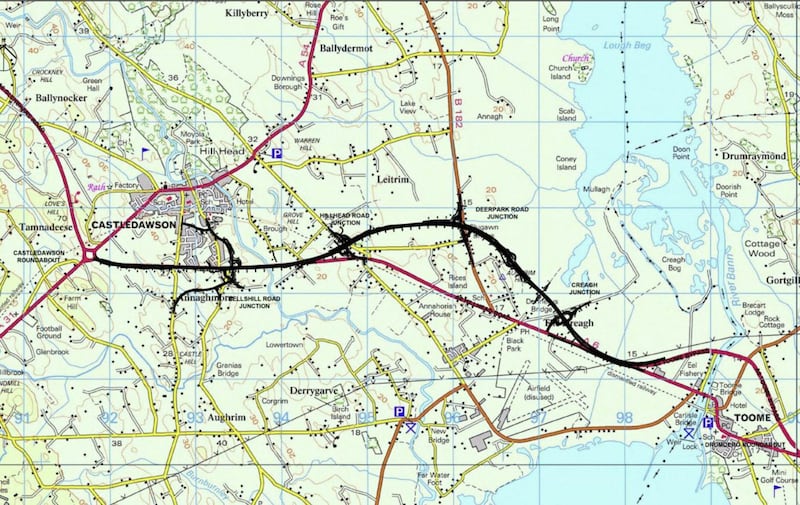
Members of Heaney’s immediate family also recently voiced concerns about the road plan.
Speaking in advance of the opening of a centre dedicated to the poet in nearby Bellaghy in September, his son Chris said Heaney “had his concerns about it, which we as a family share”.
“I can understand the point of view of the frustrated commuter, but it’s difficult to understand how you can have on the one hand the celebration of this particular landscape and on the other this going ahead,” he said.
However, the poet's brother Hugh, who lives in south Derry, said he has “no objection whatsoever” to the road “going where it's going”, saying it “will not do Heaney country any harm at all”.
Earlier this year the new Sinn Féin minister for infrastructure, Chris Hazzard, said his department “is acutely aware of the importance of the heritage sites relating to Seamus Heaney in his works”.
He appeared to suggest that the route favoured by Heaney was rejected because it would divide the parish of Newbridge - which is already split by the existing Belfast to Derry road.
“The chosen alignment minimizes the impact of severance upon the local community (parish) through which it passes,” he said.
“Other route options would have had a more detrimental impact upon this community and still would have affected landscape associated with Seamus Heaney’s work.”
Work on the dual carriageway is ready to begin, but an application for a judicial review into the scheme is currently before the High Court.
